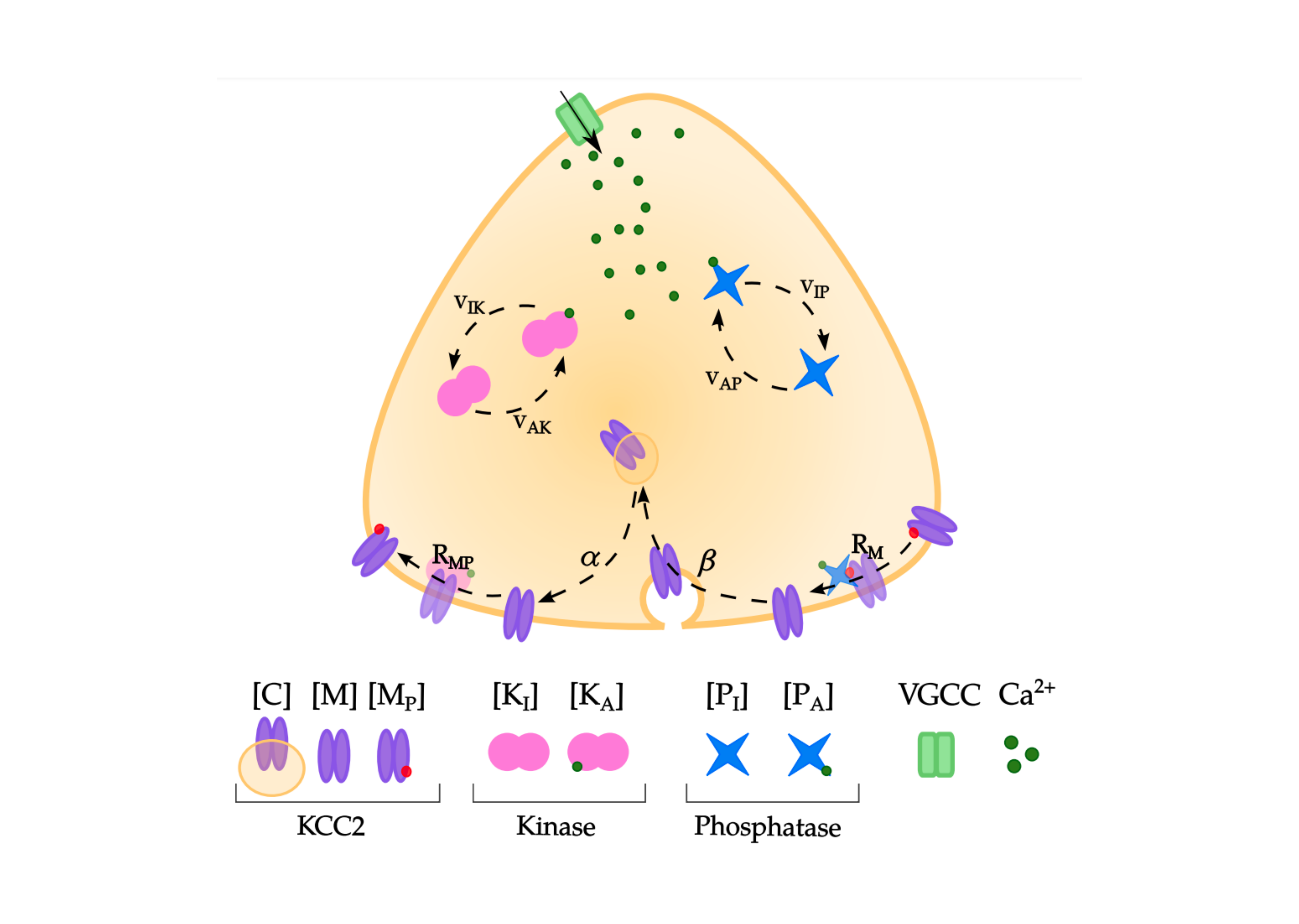Modeling Calcium-Dependent Regulation of KCC2 Phosphorylation as a Mechanism for Inhibitory Synaptic Plasticity
I earned my Masters degree in 2015, with a research project exploring how the timing of neuronal signalling could influence the trafficking of a particular protein (KCC2) responsible for regulating homeostatic chloride levels in inhibitory pyramidal cells of the hippocampus. In healthy, mature neurons, KCC2 maintains low intracellular chloride concentration -- allowing the neurotransmitter GABA to have an inhibitory effect. However, repetitive signalling between cells can effect the strength of inhibition by modifying the GABA reversal potential. This work explored how changes in the level of KCC2 expressed in a cell membrane could be responsible for this change in GABA reversal potential, and the putative molecular mechanisms by which this change takes place.
This project was designed and implemented using the NEURON simulation environment.
